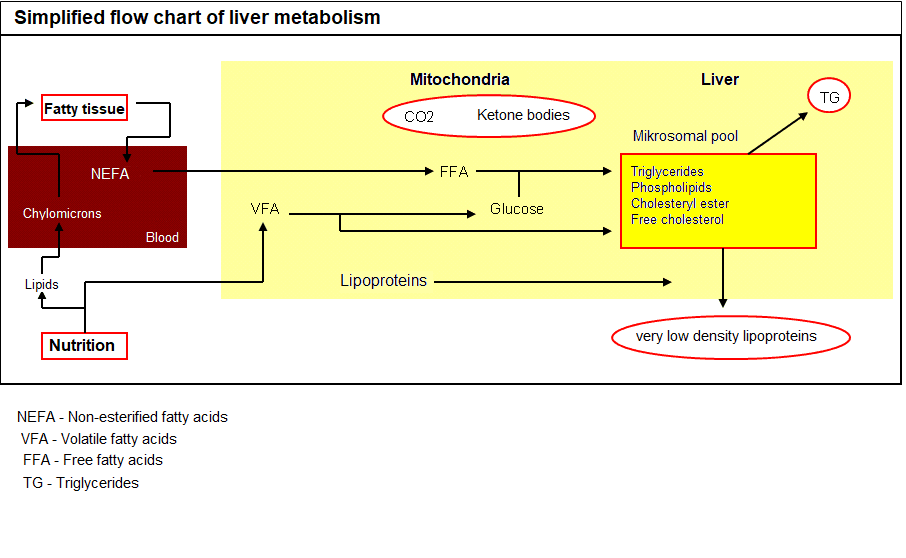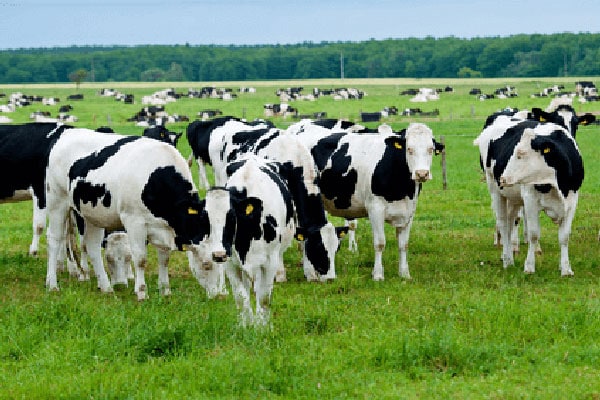Worth knowing!
The liver reaches its “final size” at the age of 3 and weighs on average 4 – 10 kg, depending on the breed.
Function of the liver
21 days before and after calving are decisive points in the health, productivity, reproductive performance and subsequent profitability of a dairy cow.
Table 1 clearly shows how the energy and glucose requirement triples. The need for fatty acids increases fivefold and amino acids twofold. This increased nutrient requirement can be met in part by an increased nutrient supply (= increased feed intake, increased nutrient concentration), but also by the mobilisation of the body’s reserves. To prevent fatty liver, ketosis and other metabolic disorders after calving, the metabolization of fat in the liver must be optimised. Taking seals as an example, we can see that mobilisation of the body’s reserves does not necessarily lead to metabolic disorders. During the suckling phase, no additional food is ingested and thus milk is produced entirely from the body’s reserves.
| Table 1 | Comparison of nutrient requirements 25 days before and four weeks after calving (according to Bell 1995) | |||
|---|---|---|---|---|
| Energy
MJ at NEL/ day |
Amino acids
g/day |
Glucose
g/ day |
Fatty acids
g/ day |
|
| 25 days ante partum | 36 | 718 | 666 | 250 |
| 4 days post partum | 109 | 1374 | 1775 | 1224 |

JOSERA DairySafe – so that the liver does not become fatty and sluggish
A cow quickly slides into ketosis, bringing far-reaching consequences. Discover the role played by the liver and how this important organ needs to be protected here.
How will I know if my cows are suffering from liver strain?
Acute liver damage can be assessed by the levels of AST (SGOT) in the blood, and chronic liver damage is reflected in the levels of GLDH. Ketosis can be indicated by the levels of β-Hydroxybutyric acid. The standard values of the respective laboratory are decisive for the interpretation of these values.
A new digital device quickly and accurately measures the concentration of ketone bodies in the blood. It is very easy to use, and mistakes are virtually impossible. A ketosis test should be performed systematically in all animals around the calving period, between the fifth and the eighteenth day after calving.
A cow’s ability to create free fatty acids by means of VLDL (very low-density lipoprotein) from the liver is very low compared to other animal species [e.g. rats, fowl or seals (see above)]. This means that the cow has to break down practically all free fatty acids and convert them to energy. This results in the further dangers of ketosis and fatty liver. It is estimated that 35-66% of all dairy cows have moderate to severe fatty liver (US study).
Nevertheless, there are ways to support a cow’s metabolism.
High-performance animals are like high-performance athletes. They have very special requirements when it comes to feeding. Feeding errors are more severe in high-performance animals than in lower-performance cows. Very high-performance cows are also more susceptible to metabolic diseases such as ketosis. High-performance dairy cows rely on an efficient lipid metabolism to deliver genetically-determined yields over multiple lactations.
Special feedstuffs such as DairySafe and LactoStart help to
- prevent ketosis,
- ensure better milk production and persistence throughout lactation,
- improve fertility,
- improve health,
- ensure a longer productive life and
- much more…
You might be interested in the following contents:
Ketosis in dairy cows
As the central metabolic organ, the liver is exposed to considerable stress around calving (transit phase). A cow quickly slides into ketosis, bringing far-reaching consequences.
Ovarian cysts- a common cause of fertility disorders
A nuisance many farms are aware of is multiple inseminations, which are caused by fertility disorders. Ovarian cysts are a common cause here. Cows with cysts are problem animals.







 (1 Votes, average: 4.00 von 5)
(1 Votes, average: 4.00 von 5)
